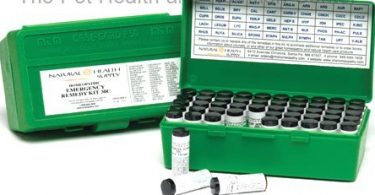Sixteen years after qualifying as a medical doctor and training in homeopathy and whole person medical approaches, my professional life changed forever.
I had begun work on my book on taking the case in homeopathy, The Homeopathic Conversation1 and life as a homeopathic doctor in London had been stimulating and enjoyable. Homeopathy attracts many unconventional, kindly, loving and intelligent people and I’d met many of them on half a dozen visits to George Vithoulkas’s school of classical homeopathy on the lovely Greek island of Alonissos (where I proposed to my wife and co-author, Hephzibah in the Aegean sea) and other less paradisiacal places where homeopaths met and shared helpful tips and many inspiring clinical stories and we made many lifelong friends at these events. My love for homeopathy and dedicated, level-headed homeopaths remains undiminished.
It was passion for comedy more than medicine that enticed me in 1996 to enroll on a seminar at Surrey University conducted by psychotherapist, extraordinaire, Frank Farrelly. I had been told he used jokes as dramatic interventions in psychotherapy – and to a doctor with a lifelong love of stand up comedy, this was an offer I could not refuse.
Nothing could have prepared me for what happened in the first hour of that two-day seminar. Farrelly, a portly, larger than life, mid-Westerner from Madison, Wisconsin, sporting a bolo tie which incorporated a large blue rock, struck an unlikely character in this picturesque English university campus. I took an instant liking to him.
He began with a brief but convincing explanation of his baby, Provocative Therapy, the cutting edge in the use of Reverse Psychology and humor in therapy. He seemed eager to show rather than tell and half an hour later he demonstrated his approach with a live volunteer.
I watched in awe as the man once described by a grateful patient as “the kindest, most understanding man I have ever met in my whole life, wrapped up in the biggest son of a bitch I have ever met,” took the volunteer on an hilarious journey down a rabbit hole of absurdity culminating in a mad hatter’s tea party.
I am aware that this sounds incongruous but anybody who has witnessed Farrelly in action knows how much love the man exuded viscerally towards his patients as he concomitantly satirized their unhelpful behavioral patterns. I laughed throughout but also felt tears on my cheeks. Having witnessed this extraordinary synergy of humor and love, I instinctively knew that my professional life was going to change forever.
Everything that happened in that first morning seemed logical and down to earth and yet what I assimilated in that time was nothing less than revolutionary for my practice of medicine:
- Reverse Psychology, a technique known to almost every parent, also works on adults.
- When patients are warmly “encouraged” to continue self-defeating patterns of behavior, they tend to assert their intention to move in the opposite direction and institute new patterns of improved behavior. A simple reason that this is effective is that people don’t like being told what to do – even when the requisite change of behavior is obvious such as giving up a dangerous addiction.
- The Golden Rule of Provocative Therapy is that it can only be practiced with “affection in the heart and a twinkle in the eye.”
- Nobody is ever ambushed with this approach. Patients and clients need to give full and explicit permission for the practitioner to use humor and Reverse Psychology in this way.
- The high energy atmosphere in the consulting room is beneficial to both parties. Patients find it easier to face issues when laughing at some of the absurdity of their own behavior and I have never met a Provocative Therapist complaining of ‘burnout’.
If this wasn’t enough of a sea change for me, there was still one more shock left on my first day of learning about Provocative Therapy. Seemingly out of nowhere, Frank Farrelly mentioned the word, homeopathy! A German homeopathic doctor had attended a workshop by Farrelly and noted:
“I am a medical doctor and homeopathic physician, not a psychotherapist. But what I witnessed in the Provocative Therapy workshop I attended here was remarkably similar to homeopathy.
Provocative therapy quite clearly ‘thins’ or attenuates the noxious elements in clients’ thinking, or feeling or behavioral patterns– as well as those debilitating influences in their social milieu– with laughable Daliesque imagery and warm humor, and feeds these back to clients.
I and others were amazed to see how quickly the change process began unfolding before our eyes in the interviews with the clients. Their ‘psychological immune systems’, in effect, rapidly began forming new solutions, emotional reactions, and behaviors, all of which were clearly functioning as “antidotes” to whatever problematic relationships, negative conditioning, or destructive mood states were in their lives.”2
Not only did Farrelly regularly quote this and include it on his website but he also often made his support for homeopathy, holistic medicine and healing very clear. It seemed obvious to me that this was indeed ‘homeopathic psychotherapy’ and in 2005 I was invited by the Faculty of Homeopathy to give the Richard Hughes memorial lecture on the parallel process of Homeopathy and Provocative Therapy.
In October 2021, the Faculty again honored me by inviting me to close a major conference with an interactive exploration of this relationship. On both occasions, it was heartening to me that an audience of my peers supported the idea of the process being ‘homeopathic’ in principle and there were no dissenting voices at either occasion.
*
I have written about the origin and practice of this contrarian approach in these pages before3 so will share some of the insights my wife, Hephzibah (Director of the London Art Therapy Centre), and I have developed over 25 years’ experience of using Provocative Therapy which have culminated in the publication of our book, Almost Happy: Pushing your buttons with Reverse Psychology.4
That laughter is good for our physical health has been confirmed by several decades of research and brought to the attention of the public by chuckle clubs, laughter yogis and the inimitable doctor/clown, Patch Adams, whom Hephzibah and I were lucky enough to meet in London. Undoubtedly laughter is also an excellent general tonic for the psyche. Who among us ever says that they do not enjoy feeling their body vibrate with laughter and would prefer to avoid it? The more important question is: Can laughter and comedy be used as powerful tools in psychotherapy, counseling, coaching and other “talking cure” approaches?
It is arguable that when we are less stressed, our muscles relaxed, breathing deeply and have increased levels of endorphins, encephalins, dopamine and oxytocin (all benefits of laughter), we are in an ideal psychophysiological state to face some painful issues about ourselves. The question remains: What exactly do we laugh at?
Ideally we would like to laugh at the parts of our personalities that are holding us back and sabotaging our chances of happiness. Since the early 20th century it has been fashionable to subscribe to the “Single Self Assumption”5 yet scores of psychologists, writers, theologians and more, firmly believe that we are composed of many archetypes (aka subselves, subpersonalities, imagoes, I-positions and many other terms).
When our “symphony of selves”6 is in tune and all our subpersonalities are in balance, we tend to feel harmonious, relaxed and happy. However, when one subself grabs the megaphone and asserts dominion over all our other subselves, we become discordant, unbalanced and unhappy. How can we put a domineering subself back in its box or find a way to quieten it down?
The Almost Happy Approach (AHA!) aims to provoke the individual to laugh at the overloud subself causing the trouble! The great American writer, Mark Twain put it succinctly: “Against the assault of laughter, nothing can stand.”7 A politician who – for whatever reason – becomes a laughing stock, usually has to resign in a matter of hours – at least in the United Kingdom.
When the offending subself is laughed at, it loses its control over us, not only because it cannot assert itself when we are laughing at it. Equally important is the simple fact that when we laugh at an over-controlling subself, we become much more aware of its power over us.
While we were unconsciously influenced by a subself, it had enormous control over us. But when we are provoked to be conscious of being bullied by one of our own subpersonalities, we are empowered to do something about it! In most cases it is obvious to the patient what they need to do.
This reminds me of a phrase often repeated by my most influential teacher in homeopathy, George Vithoulkas – obstacles to cure. Being controlled by a dominant subself is in this homeopathic doctor’s opinion, an obstacle to cure in any talking therapy.
There are other ways to tune our symphony of selves. Learning Voice Dialogue 8 from Hal and Sidra Stone was an important influence in understanding this process. The Stones encouraged a “dialogue” between the voices, a protector controller (analogous to the conductor of an orchestra) and an umbrella level of awareness.
When I co-facilitated a workshop with John Rowan, author of many books on subselves (or the term he eventually preferred, I-positions 9), I watched in amazement as this 90-year old doyen of humanistic psychology authoritatively told a subself of a volunteer to speak less!
The volunteer took it well, but this is perhaps a technique best essayed when you have at least half a century of psychotherapy and several important textbooks under your belt! I preferred simply to tease and satirize people’s self-sabotaging subselves, always remembering the Golden Rule of Provocative Therapy (affection in the heart and a twinkle in the eye), but it was heartening to get John’s endorsement of this approach a few years before he died.10
In, Almost Happy, we wanted to give readers an easily digestible subjective experience of the process. Turning the pages of the book, one encounters pictures of wearable buttons (“badges” in the UK), each a comic mirror of a commonly occurring subself that is prone to become too loud and dictatorial.
The reader, on recognizing a button that suits a personal subself, is invited to accept some Provocative Suggestions or “suJestions” all of which utilize Reverse Psychology and are typical of the sort of thing we and Provocative Therapists all over the world tend to say to patients – always with warmth, kindness and smiling eyes.
The aim is to give readers a small taste of the Almost Happy Approach (AHA!). Anyone can take the process further by actually wearing the button in private or for the bold, demonstrative and adventurous – in public.
A patient who wore the ON DIET button on a plane was amazed at the empathy and encouragement he received from other travelers. Smokers find it hard to imbibe when wearing the button FEARLESS SMOKER and if someone can be persuaded to accept the I’M RIGHT button, they tend to become a bit more humble!
Finally a word about the phrase “Almost Happy.” Perhaps we should stop this endless striving for happiness and accept being almost happy as an ideal state? After all, if we are happy, where do we go from there other than to being less happy or unhappy? If you are comfortable with being almost happy, you are free to reach for happiness and laughing at some of your more disruptive subselves is a fun way of doing just that.
REFERENCES:
- Kaplan, B. The Homeopathic Conversation (Natural Medicine Press) 2001
- Farrelly, F. www.provocativetherapy.com
- https://hpathy.com/homeopathy-papers/homeopathy-and-provocative-therapy-contrarianism-in-medicine/
- Kaplan B, and Kaplan, H. Almost Happy: Pushing your buttons with Reverse Psychology (Loba Publishing) 2021
- Fadiman, J. and Gruber, J.: Your Symphony of Selves: Discover and understand more of who we are. (Park Street Press) 2020
- Fadimian, J. and Gruber, J.: ibid.
- Twain, M. The Mysterious Stranger, (Harper and Bros) 1916
- Stone, H. and Stone, S. Embracing Our Selves, (New World Library) 2011
- Rowan, J. Discover Your Subpersonalities (Routledge), 2017
10. https://eurotas.org/dr-john-rowan-workshop-with-brian-kaplan/





Its a new outlook towards psychotherapy…it would be more interesting to know more about how it is done.
Thank you very much for the information, for the manner of presentation, for the kind heart and laughing eyes. Let’s be happy and help people around us to follow the path of happiness.
Thanks, Sunayana! The classic textbook on the subject is Provocative Therapy by Frank Farrelly and Jeff Brandsman, but nothing beats actually watching it happen for 15 minutes. Not much good stuff on YouTube but at conferences one is able to watch the master in practice on video.
Thanks! Love the phrase ‘laughing eyes’!